Here’s exactly what you’re doing wrong (or right)
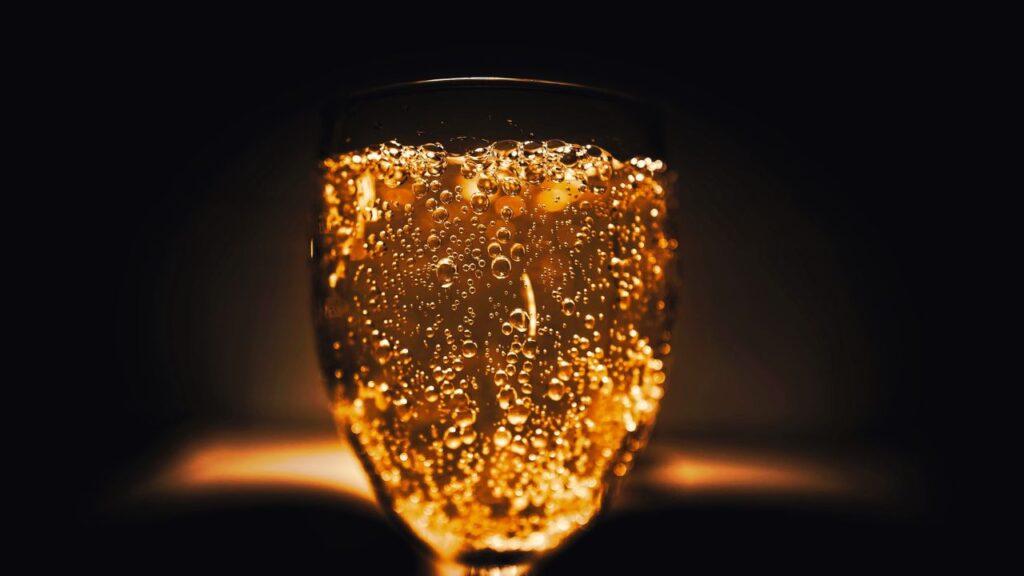

I studied ice cream for my PhD, which I thought was pretty cool until I came across this lab that was investigating the best way to drink Champagne.
That’s when I got a little jealous.
The researchers tested different techniques to see which were ideal for keeping your bubbly…well… bubbly. They also looked into optimizing the aroma of the wine and that tickle on your tongue.
I’m completely serious.
This was a real study.
But let’s cut to the chase to find out if you’re a Champagne connoisseur or a total amateur.
Proper Pouring Procedure


Let’s start from the very beginning, is there a best way to pour sparkling wine?
In general, I’ve seen two different techniques:
- Pouring the beverage straight down the middle of a standing glass (somehow I always overflow the glass when I pour this way).
- Tilting the glass on an angle so that the Champagne hits the side and rolls down to the bottom of the glass (similar to pouring a beer).
The study found that the key difference between the two techniques is how gentle or harsh they’re on the Champagne.
The second method — where you angle your glass — is much more gentle for a couple reasons.
First, the liquid doesn’t fall as far since it hits the side of the glass.
Second, the action of the Champagne flowing down to the bottom of the glass versus splashing into the bottom of the glass is much more mild, which helps retain more bubbles in the drink.
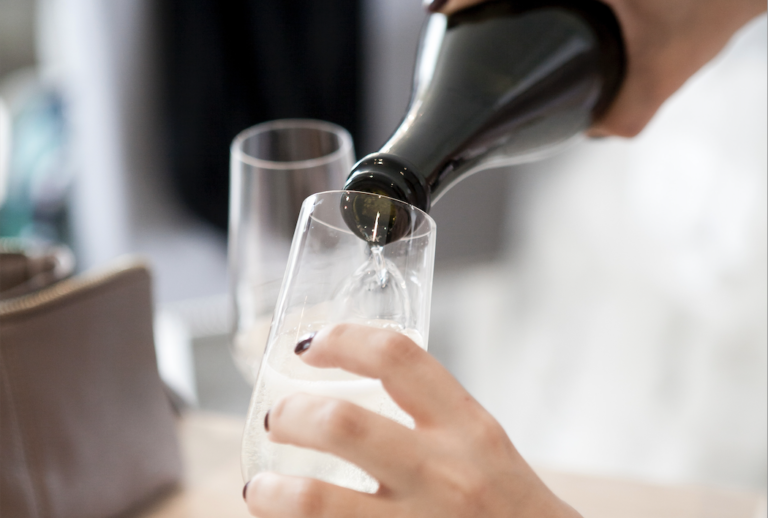

In contrast, pouring the wine smack dab down the center of the glass (method 1) causes turbulence making it easy for those bubbles to escape the wine prematurely. This means you lose some of your bubbliness before the drink ever hits your lips.
The researchers estimated that by pouring your drink in a gentler fashion, you preserve tens of thousands of bubbles in your glass.
You can see the difference in pouring technique in the picture below. The cloud of carbon dioxide escaping each glass is visualized using infrared imaging.
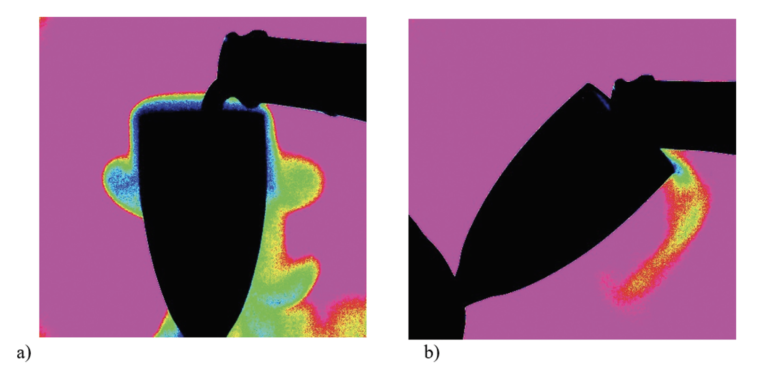

Only a tiny amount escapes that nicely angled glass, which means when it comes to pouring Champagne — tilt that flute and treat your bubbly with some respect.
Flute or Coupe?
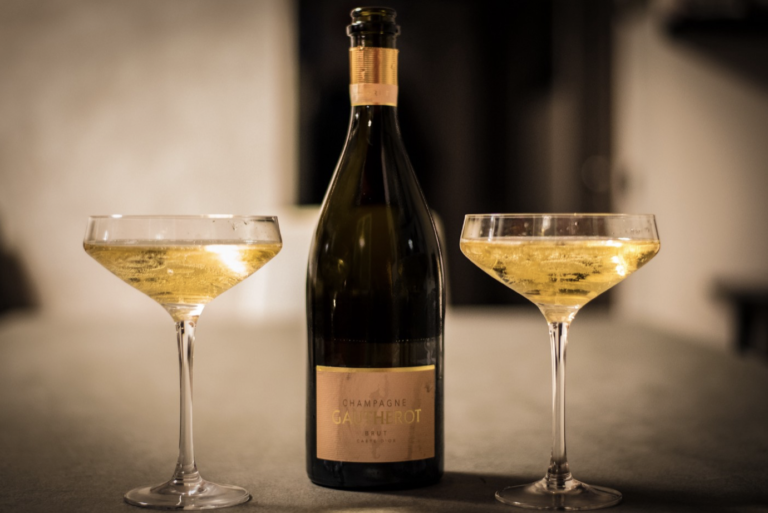

While Champagne flutes seem to be the most popular type of glass, every so often I’m surprised to receive my bubbly in a coupe.
This always struck me as odd since the two glasses are completely different in shape. The flute is tall and slender while the coupe is short and stout.
And as you might expect, the researchers saw a big difference between two glasses.
When it comes to retaining those bubbles, the flute performed much better than the coupe.
The flute with its narrowing opening makes it difficult for the bubbles to find their way out of the Champagne, whereas the wide-brimmed coupe is an easy jailbreak.
Just look at the difference.


The wide opening of the coupe also leads to a second problem — it allows too much of the aroma to leave the Champagne.
The aroma or smell of a drink is caused by volatile molecules. This just means the molecules can travel from the drink to the air and float up into your nose. I like to imagine these molecules just going on a little afternoon stroll.
The problem is, if these volatile molecules leave too quickly, we don’t get to enjoy the nice aroma. They’re gone before we ever experience the Champagne.
This is a big problem when serving the Champagne in a coupe — its wide opening allows those aroma molecules to escape more quickly.
You can imagine then that the narrower opening of the flute is quite efficient at retaining those volatile molecules just like the bubbles.
So, if you want to get the full bubbly experience, go with the Champagne flute.
But if you’re someone who feels Champagne has too much of a bite or can be irritating to your mouth, you could purposefully let some of those carbon dioxide bubbles be released by simply switching from a flute to a coupe.
And for the Goldilocks options, the study points out that a tulip-shaped glass would give you a bubbliness in between the traditional Champagne flute and coupe.
To Swirl or Not To Swirl
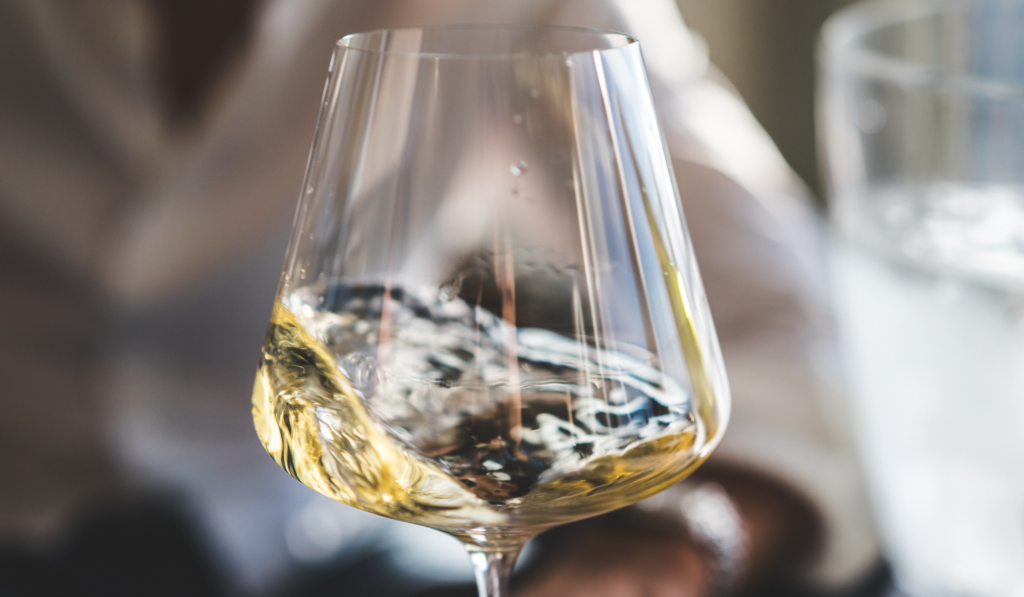

To get the best aroma from a red or white wine, you need to give the glass a swirl to renew the molecules at the surface. Remember there’s no bubbles doing the work for us in these non-effervescent wines.
But now that I think about it, I’ve never seen someone swirl Champagne when that’s such a very common habit for red and white wines.
And there’s a good reason for this.
A sparkling wine is in constant motion. As the carbon dioxide bubbles move upwards, they drag the surrounding fluid with them. This fluid then displaces any neighboring fluid creating a natural flow of molecules throughout the glass.
Just look how beautiful these patterns are!
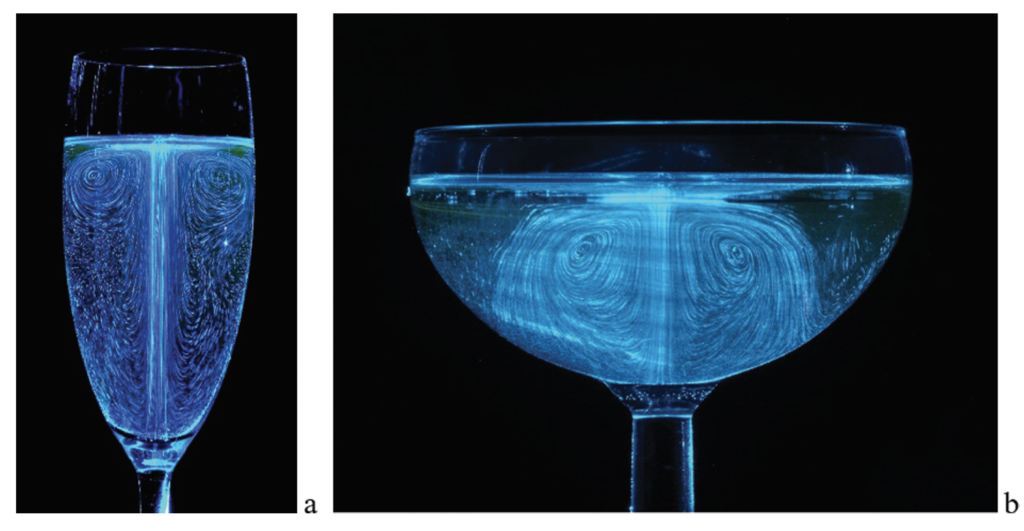

Over time a sparkling wine will naturally bring new flavor and aroma molecules to the surface of the glass where we can appreciate them. In comparison, a non-sparkling wine lacks this flux.
Here’s the TLDR!
Go for the Champagne flute to maximize bubbliness and keep those aromas locked in.
When pouring the Champagne, angle the glass in a similar fashion you would do for beer. This method allows the Champagne to flow down the side of the glass instead of splashing vigorously into the bottom, which releases bubbles prematurely.
If you’re a nerd (like me) and you want to read the full scientific studies on the best Champagne practices, you can find them here and here.
Cheers!

